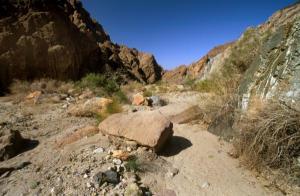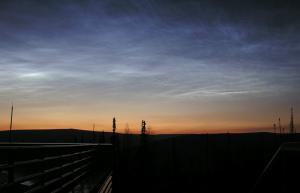OF THE
TIMES

|
| ©William Royer |
| A box canyon on the San Andreas fault: High speed ruptures travelling along the straight section of the fault could see Santa Barbara and Los Angeles worst hit in future earthquakes. |

|
| ©Unknown |

|
| ©Richard Collins, UAF Geophysical Institute |
| Noctilucent clouds shine in the dark portion of the sky in this image taken from the Poker Flat Research Range in 2005. |
Comment: A footprint - in the mud - in the egyptian desert? For years Hawass has been denying the possibilities of water marks on the sides of the sphinx. Will this convince him to review the evidence?